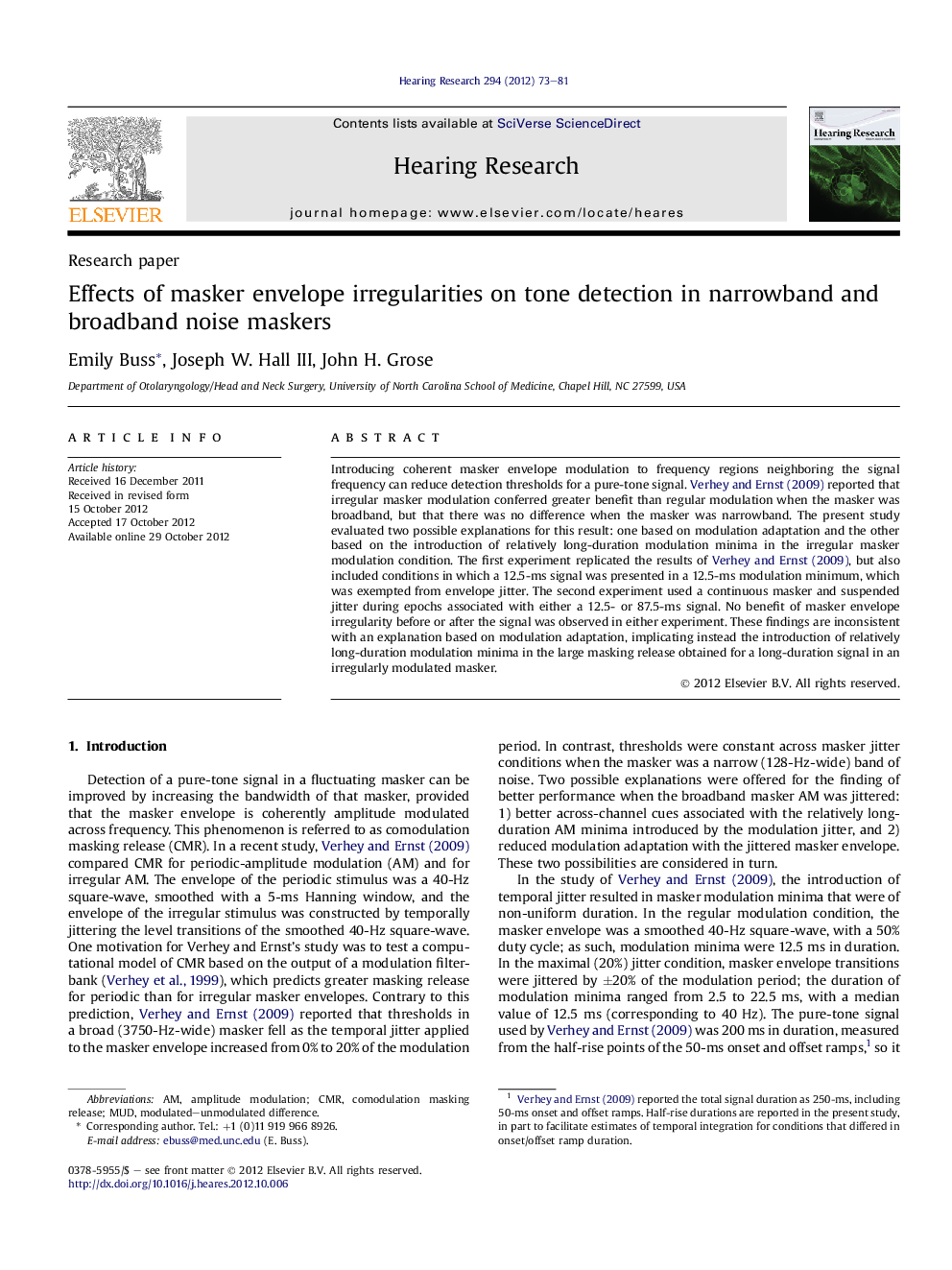| Article ID | Journal | Published Year | Pages | File Type |
|---|---|---|---|---|
| 4355281 | Hearing Research | 2012 | 9 Pages |
Introducing coherent masker envelope modulation to frequency regions neighboring the signal frequency can reduce detection thresholds for a pure-tone signal. Verhey and Ernst (2009) reported that irregular masker modulation conferred greater benefit than regular modulation when the masker was broadband, but that there was no difference when the masker was narrowband. The present study evaluated two possible explanations for this result: one based on modulation adaptation and the other based on the introduction of relatively long-duration modulation minima in the irregular masker modulation condition. The first experiment replicated the results of Verhey and Ernst (2009), but also included conditions in which a 12.5-ms signal was presented in a 12.5-ms modulation minimum, which was exempted from envelope jitter. The second experiment used a continuous masker and suspended jitter during epochs associated with either a 12.5- or 87.5-ms signal. No benefit of masker envelope irregularity before or after the signal was observed in either experiment. These findings are inconsistent with an explanation based on modulation adaptation, implicating instead the introduction of relatively long-duration modulation minima in the large masking release obtained for a long-duration signal in an irregularly modulated masker.
► Introducing jitter to the masker envelope pattern can affect the detection threshold for a pure-tone signal. ► Effects of masker irregularity are not found when jitter is suspended during presentation of the signal. ► Results are more consistent with local envelope rate effects than modulation adaptation.
